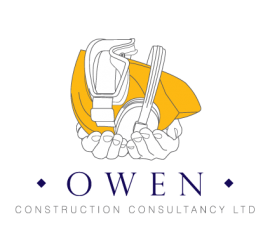In the bustling world of construction, safety should always remain a top priority. With the potential risks and hazards present on a construction site, it is crucial to maintain a systematic approach to documenting accidents and incidents. In the United Kingdom, one effective tool for recording such occurrences is an accident report book. This blog will explore the importance of having an accident report book on a UK construction site, discussing its benefits, legal obligations, and best practices.
Understanding the accident report book
An accident report book is a designated logbook where all accidents, incidents, and near misses on a construction site are recorded. It serves as a central repository for documenting and tracking these events, providing valuable information for future reference and safety improvement initiatives.
Legal obligations
Under UK law, construction companies are legally obligated to keep a record of accidents and incidents on their sites. The Reporting of Injuries, Diseases, and Dangerous Occurrences Regulations 2013 (RIDDOR) outlines the legal requirements for reporting accidents in the workplace. Construction sites are considered high-risk environments, and failure to comply with these regulations can result in penalties and legal consequences.
What are the benefits of an accident report book?
-
Incident documentation and investigation
Accurate and detailed documentation of accidents and incidents is essential for understanding the causes, identifying trends, and developing preventive measures. An accident report book allows for a consistent and systematic approach to record incidents, enabling thorough investigations to determine root causes and implement corrective actions.
-
Compliance and legal protection
Maintaining an accident report book demonstrates compliance with legal requirements. In the event of an investigation or legal proceedings, a well-documented accident report can serve as crucial evidence, demonstrating that the necessary steps were taken to ensure worker safety and adherence to regulations.
-
Identifying safety trends
By regularly reviewing accident reports, construction companies can identify patterns and trends, highlighting areas where safety improvements are needed. These insights can guide risk assessments, training programs, and the implementation of targeted safety measures to reduce the occurrence of accidents and protect workers.
-
Benchmarking and performance measurement
An accident report book allows for the benchmarking of safety performance over time. By analysing incident rates and severity, construction companies can track their progress, compare performance with industry standards, and set targets for continuous improvement.
Best practices for maintaining an accident report book
-
Accessibility and confidentiality
The accident report book should be easily accessible to all employees, with clear instructions on how to record incidents. Confidentiality should be maintained to encourage open reporting without fear of repercussions.
-
Accurate and detailed reporting
Employees should be encouraged to provide accurate and comprehensive information when documenting incidents, including date, time, location, individuals involved, witnesses, and a description of the event. This information will be crucial for subsequent investigations and analysis.
-
Regular review and analysis
Regularly reviewing accident reports enables the identification of trends, patterns, and recurring issues. This analysis should inform safety improvements, risk assessments, and training programs, ensuring ongoing safety enhancements on the construction site.
An accident report book is an indispensable tool for construction companies in the UK. It facilitates the systematic documentation, analysis, and improvement of safety practices on construction sites. Beyond legal compliance, it provides a foundation for enhancing worker safety, identifying trends, and benchmarking performance. By implementing and maintaining an accident report book, construction companies can prioritise safety, protect workers, and foster a culture of continuous improvement.
June 30, 2023
